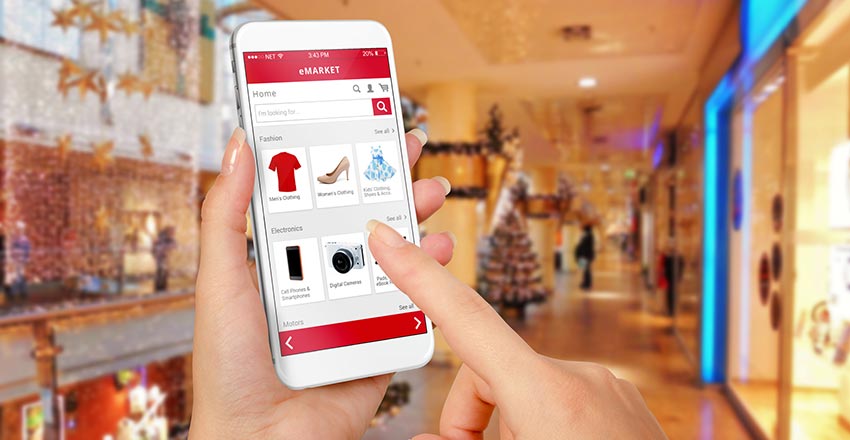
Your website is a tool for branding, advertising, and building a reputation for your business that transcends borders.
The days of wanting or needing a website because having an online presence is important are long gone.
Today, a website is your signature on the digital landscape.
It is the single most important element that spreads the word about your business, builds credibility for your product line or services, and can be accessed by anyone no matter where they live in the world.
A website holds immense power in how well your business can operate in the world. But what makes a great website?
Following Are Some Of The Most Important Aspects Of An Ecommerce Website
Graphics, Images, and Copy-Writing
What are two of the most important things that will lead a customer to actually purchase an item or sign up for a service you’re offering? Images, and copy.
Eye-catching graphics and photography lure in the eye of the victory and keep them on your website for more.
The attractiveness of the first look of your website sets the tone for the entire experience users will associate with your business.
As humans, we’re drawn to beauty, polished design, and sophisticated visuals — and it’s the same for websites. Add to that the impact one creates with powerful copy, and you can create an absolute winner.
Mix compelling copy with photographs for each individual product, and you’re building a purchase journey that’s enjoyable for the visitor.
Making a choice among products becomes a lot easier, and you’re able to kick your competitors to the curb when the images catch the eye of your customer better than anyone else. You’re aiming to amplify the decision-making process and add satisfaction to the mix.
When uploading product photographs, make sure they show every corner. Switch to different angles, and allow customers to zoom in to really see what they’re purchasing.
When you offer this in-depth visual detail alongside descriptive and emotionally compelling descriptions that further feed their need for information, you are instilling trust in the potential buyer.
This trust then needs to be validated with the actual product, and you’ve set the stage for a customer that will keep coming back for more.
That’s how you run a great eCommerce business over the long term. You make a commitment, and you follow through.
Make sure you have the perfect set of catalog photographs to represent your products online.
Next, focus on the copy that accompanies these beautiful images. For the customer, nothing is more annoying than finding a product they are interested in, only to realize that there’s not much information available on it.
That being said, while your copy does not need to contain a raft of information on the product, it must be enough to answer some of the most important questions that the potential customer might have.
Provide material and size details, options they can choose from, and also how the product will benefit their life. Customers respond emotionally to benefits that will elevate their current lives and processes, so make sure to add detail on how your product will make all the difference.
Easy Checkout
Some websites seem to add irrelevant and inconsistent steps to the purchase process via their website, and it’s mind-boggling why a designer or business owner thought that was a good idea.
Why websites make things complicated for their customers is a mystery. When you’re building an e-commerce site, you are doing it for the sole purpose that people will buy your products.
One would assume that making the process as simple as possible would be a no-brainer — but designers sometimes completely miss the plot.
The sole purpose of having an e-commerce website is to get people to buy from your business.
Making it hard for online visitors to find important buttons, such as the “Add to cart” or “Buy now” buttons is the greatest way to lose the sale — and potentially lose out on that customer forever.
A bad experience with any business leaves a bad taste in the mouth and is hard to forget. Just as a good experience makes customers keep returning for more purchases, a bad experience pushes them away.
Make things easy for your customer, and your business e-commerce website will be able to deliver what it is meant to — abundant sales.
Quick checkouts, easy navigation, detailed product info, and voila, you have sales pouring in. Not making things easy for the customer will almost always have a detrimental effect on the purpose of an eCommerce website.
Mark Downs, Freebies, and Free Shipping, Oh My!
If you want to make sure a person buys from your website and keeps coming back for more, you provide an incentive.
How do you achieve that? You offer extras. One way to do that is to include value-added services such as providing free shipping options to certain locations — that’s going to help pick up sales in that geographical area.
Everyone loves free stuff, and if they know the product is coming from store to home without an extra cost, that’s a massive incentive to make a purchase from your e-commerce website.
Some of the most high-performing eCommerce websites routinely use eye-catching banners and position them in places that would grab customer attention. Using these banners to offer shopping deals such as sales discounts or seasonal offers.
Consider giving away freebies — something interesting and unique that is tied to another purchase. The human psyche works by attaching value where an extra item can be obtained for free.
The attractiveness of such an offer is known to drive sales and is another option eCommerce websites use regularly to attract new customers and keep old ones interested. Studies on online purchases have shown that people are ready to buy almost anything online — if given at slashed prices.
They barely see what they are spending to attain a product, because either mind is so fucked by the attractiveness of what they are saving.
That’s a massive insight that could totally transform how you operate your online business and e-commerce website. Including various delivery options is also a crowd favorite.
When a customer sees value, a time-bound offer that could end at any moment, or a discount that they wouldn’t avail if they failed to make a purchase right now, they intrinsically become interested in purchasing from your brand.
Have a Good Reputation? Show It!
Oftentimes, you see these small icons or images placed at the bottom of a website. These images represent trusted and authoritative websites, software, and applications that support the website.
They exhibit that the brand the customer is interacting with has a history of delivering great value by integrating these third-party applications that elevate several different aspects.
These trust marks or small images of accreditation from third parties, such as McAfee, VeriSign BBB, and so on.
Online purchase requires financial information that many customers are hesitant to give out — and having these accreditations assures the customer that their information will be safely processed, and protected in the future.
Many customers will abandon their carts if they consider the website risky, and will refuse to add personal information and financial details no matter how badly they actually want to make a purchase in the first place.
Customers today require complete security before they go ahead and make a purchase online. In fact, these accreditations from third-party applications and plugins have now become the norm, so customers have come to expect this as a standard.
If your e-commerce website does not display these icons, it is unlikely that you can compete in today’s dynamic and highly ruthless business space.
With financial scams and credit card information getting stolen and misused, customers are more inclined to buy from websites where they know their private information will remain safe.
Conclusion
So, these are just some of the tips that one can use to make their eCommerce website the number one destination for their customers. Improving one’s business website is a full-time commitment and cannot be attained overnight.
Unfortunately, a few tweaks and changes will not make a significant difference in your bottom line.
The more you improve your website, whether it’s the interface, product pages and displays, product descriptions, navigation, and site load times, alongside the easiest checkout and payment steps, you simply won’t change it in today’s market.
E-commerce website improvement is consistent work and a long-term commitment. So expect to be kept on your toes, but also expect great results.









